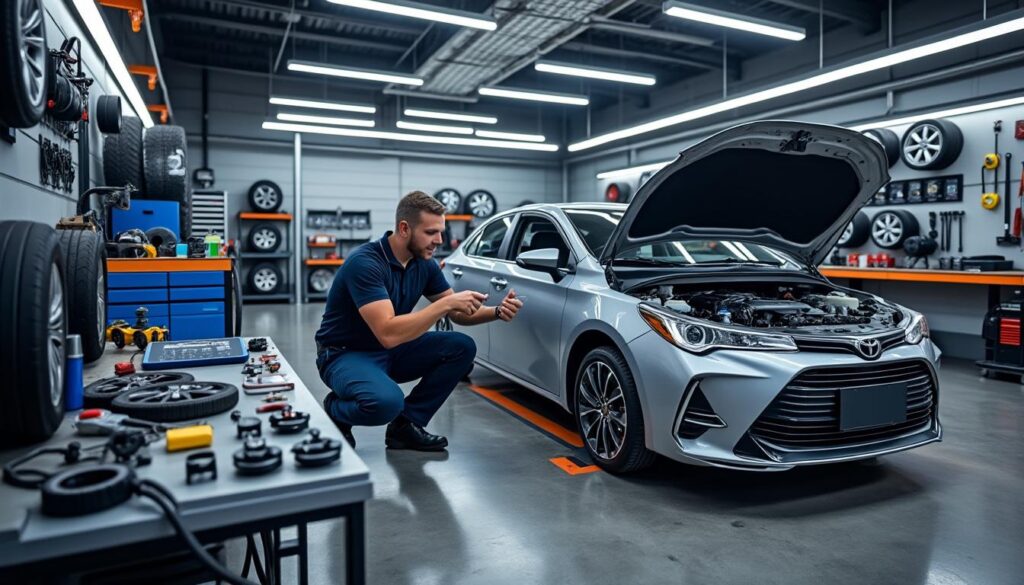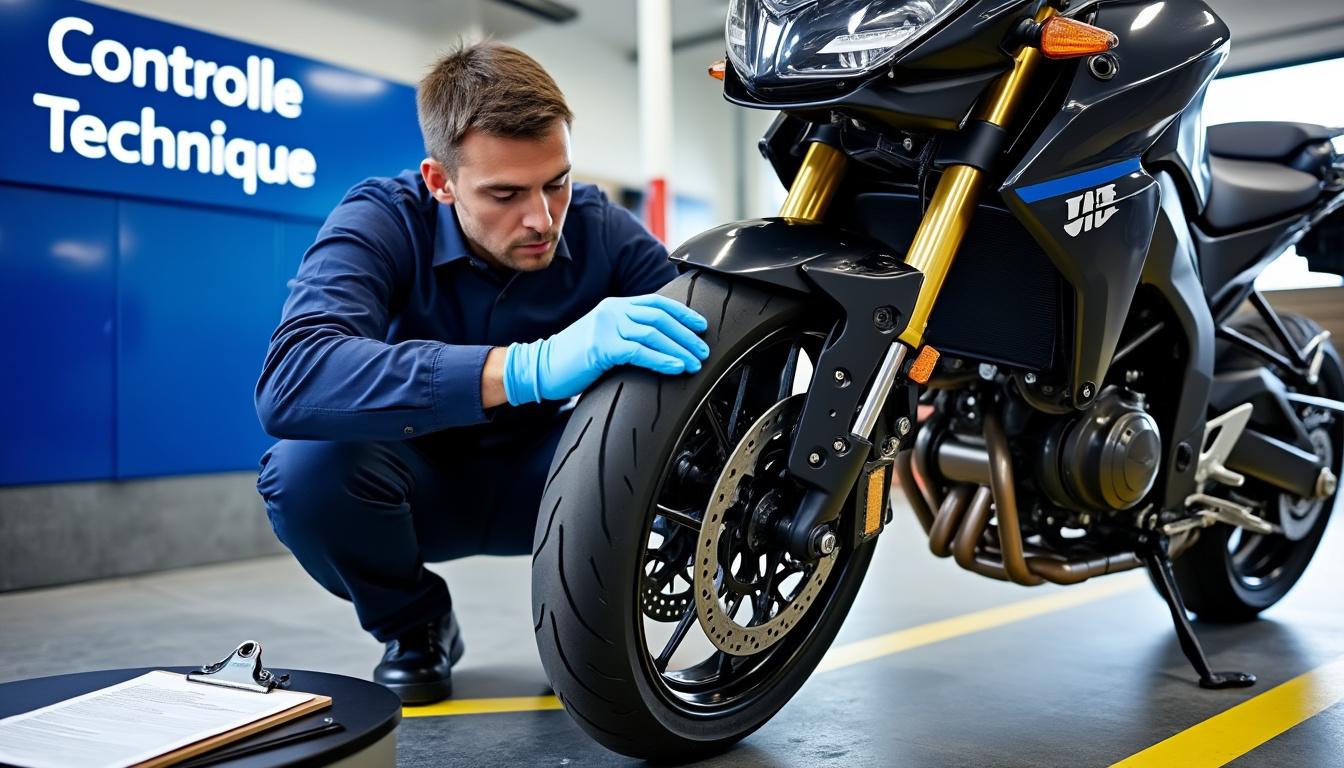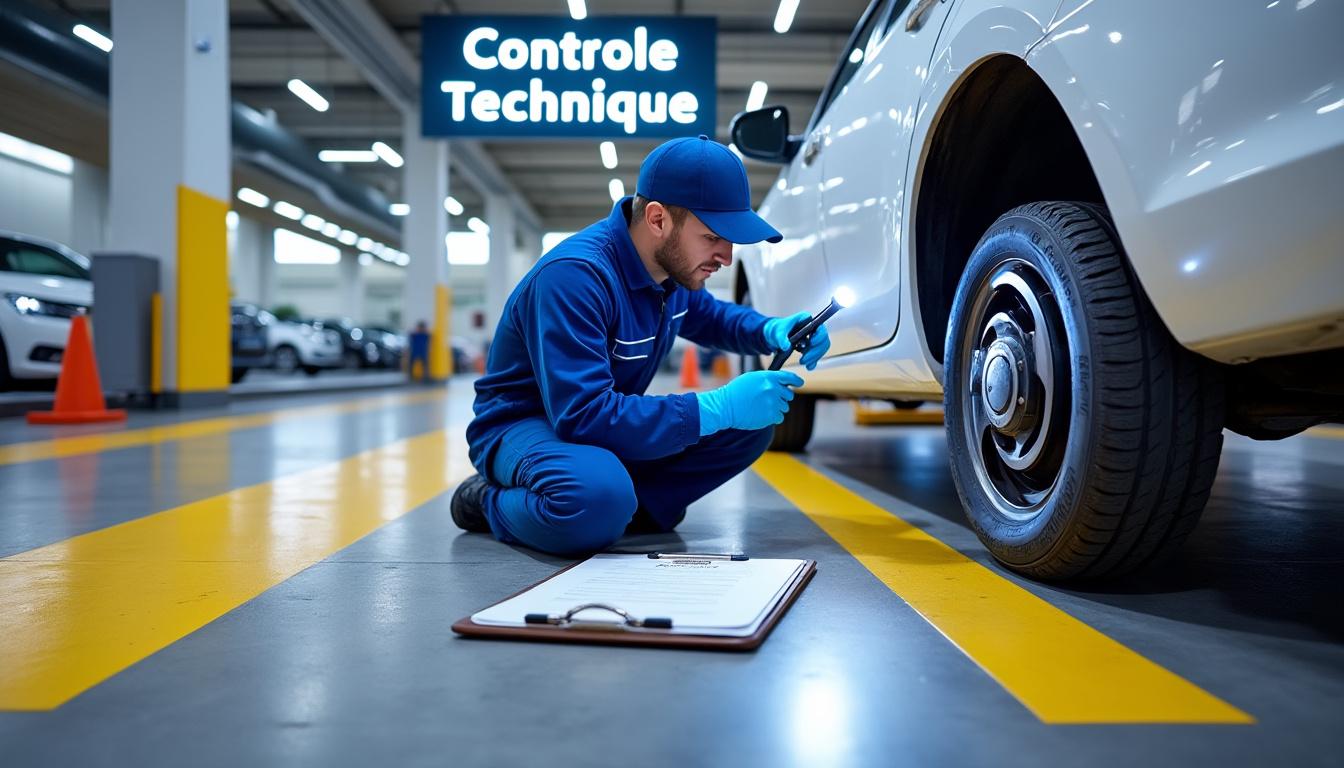Assessment of the technical inspection after a year: what to remember?

The technical inspection has always sparked debates among drivers and motorcyclists. Since its implementation for two-wheelers in April 2024, it has become crucial to assess its impact on road safety, the condition of vehicles, and driver habits. This assessment reviews the first year of this system, outlines the issues related to the technical inspection of motorcycles and scooters, as well as the lessons to be learned for the future. The success of this regulation depends on the collaboration of all stakeholders involved and an increased awareness among road users.
The framework of the technical inspection: history and issues
The technical inspection of vehicles was introduced in France in the 1990s to ensure the minimum safety of vehicles operating on the roads. This measure has gradually expanded to include categories of vehicles such as two-wheelers and cars without licenses. In April 2024, the establishment of the technical inspection for motorcycles was officially announced, thereby addressing concerns and resistance that surrounded this initiative. The goal was not only to improve safety but also to contribute to the fight against pollution, a major issue of the 21st century.
The main objective of the technical inspection is to ensure that vehicles comply with safety standards set by the authorities. However, the impacts of this regulation go far beyond the mere verification of mechanical components. On one hand, it aims to reassure the public about the safety of vehicles on the road, but there is also the economic question: this can imply an additional cost for owners. This last point is often a contentious issue. From a social standpoint, the technical inspection can also affect the perception that people have of the necessity for proper maintenance of their vehicles.
Key points of the technical inspection
- The technical inspection applies to all categories of vehicles, including motorcycles, utility vehicles, and passenger cars.
- It is generally conducted every two years, with checks on various aspects such as brakes, lighting, and pollutant emissions.
- A vehicle that fails the technical inspection may be cumbersome to repair, thereby raising concerns among owners.
The strong mobilization of inspection centers like Sécuritest, Norisko, Bureau Veritas, and Dekra has allowed for more than one million vehicles to be welcomed in this first year of technical inspection for motorcycles. Meanwhile, feedback from these centers shows a growing awareness among motorcyclists of the importance of preventive maintenance of their vehicles.
| Types of vehicles | Number of inspections conducted | Re-inspection rate |
|---|---|---|
| Motorcycles | 1,030,000 | 10% |
| Cars without licenses | 60,265 | 30% |
| Motorized two-wheelers | 139,600 | 28% |
Encouraging but mixed results
The review of this first year of technical inspection for motorcycles reveals rather encouraging results. The re-inspection rate, although noted at around 10%, remains a figure that could seem reassuring for motorcyclists, especially compared to the statistics for vehicles without licenses. The technical inspection has helped identify recurring faults, particularly regarding the condition of tires and the proper functioning of exhaust systems, points that have a direct relation to noise and pollutant emissions.
This dynamic, however, imposes a reflection: how to evolve the culture of maintenance of two-wheelers in France? Several solutions can be envisaged, ranging from public information campaigns to financial incentives for regular vehicle maintenance. Centers such as France Contrôle or VTN have crucial roles to play in communicating these issues.

The specifics of the technical inspection for motorcycles
The technical inspection of motorized two-wheelers (VRM) raises unique challenges. In an environment often perceived as more lenient than that of automobiles, motorcyclists have often expressed reservations about the imposition of a technical inspection. However, as the system becomes established, tolerance towards safety and compliance standards has increased. In this perspective, it is necessary to understand why these specifics are fundamental to ensuring safety on the roads.
Impact on road safety
The safety message conveyed by the establishment of the technical inspection for motorcycles is clear: it aims to contribute to a safer road for all. Road accidents are tragically high among motorcyclists, often exacerbated by mechanical defects. Indeed, a poorly maintained motorcycle can have serious consequences for the rider, but also for other road users.
- The technical inspection helps to detect mechanical problems before they become dangers.
- It imposes a legislative framework, making motorcyclists more responsible for the condition of their vehicle.
- It creates a collective awareness about the necessity for regular and thorough maintenance.
The technical inspection has been a vector of cultural change regarding the perception of motorcycle maintenance. With calls to adopt a proactive approach, this measure could change the classic cycle whereby many motorcyclists only react to breakdowns instead of anticipating maintenance needs.
| Dangers related to poor maintenance | Potential consequences |
|---|---|
| Worn tires | Loss of grip, accidents |
| Defective brakes | Increased stopping distances, heightened accident risks |
| High pollutant emissions | Fines, contribution to air pollution |
The economic challenges of technical inspection
Beyond safety considerations, the technical inspection of two-wheelers also raises economic questions. For motorcyclists, the costs associated with bringing their vehicles up to standard can be a deterrent, especially for those whose vehicles are older. Managing the expenses related to repairs necessary after failing a technical inspection is a significant challenge for many users.
The cost of a technical inspection and potential repairs can be a source of concern for many. Indeed, many drivers wonder if they will be able to cover these expenses. Several market players, like Autovision or CTM, offer solutions to minimize costs, including maintenance packages and discounts for work done in their networks.
Initiatives to lighten the financial burden
Currently, several initiatives are in place to alleviate this financial burden on motorcyclists:
- Proposals for payment installment plans for necessary repairs.
- Information on low-cost repair options.
- Regular awareness campaigns on the benefits of regular and preventive maintenance.
These efforts aim to encourage motorcyclists to become more actively involved in the safety of their vehicle while considering the economic concerns that could easily hinder this evolution.
The future outlook for technical inspection in France
As the technical inspection for motorcycles has taken off, the coming years appear crucial. Each sector actor, from the motorcyclist to the inspector, must participate in maintaining a high standard of safety while navigating logistical and economic challenges. Legislative expectations as well as future developments for new standards must be taken into account for continuous updates to the current framework.
The new measures planned
Future deadlines remain on the horizon, notably the regulation on noise levels which is set to come into effect on July 1, 2025, as well as a speed control measure planned for March 2026. These new requirements may potentially add additional responsibilities for drivers and inspection centers.
- Raising awareness of adherence to the new standards is essential to prevent a surge in re-inspections.
- Increased training for inspectors will be necessary to effectively apply these new rules.
- Support from road safety advocates will be fundamental to promote these changes.
With the integration of new technologies and constant vigilance, the prospects for technical inspection of motorcycles in France are promising. A continuous dialogue among all involved actors, whether within national or local bodies, is essential to shape a future where safety and motorcycle maintenance become a shared priority.

Source: www.caradisiac.com
Leave a Reply


Articles relatifs